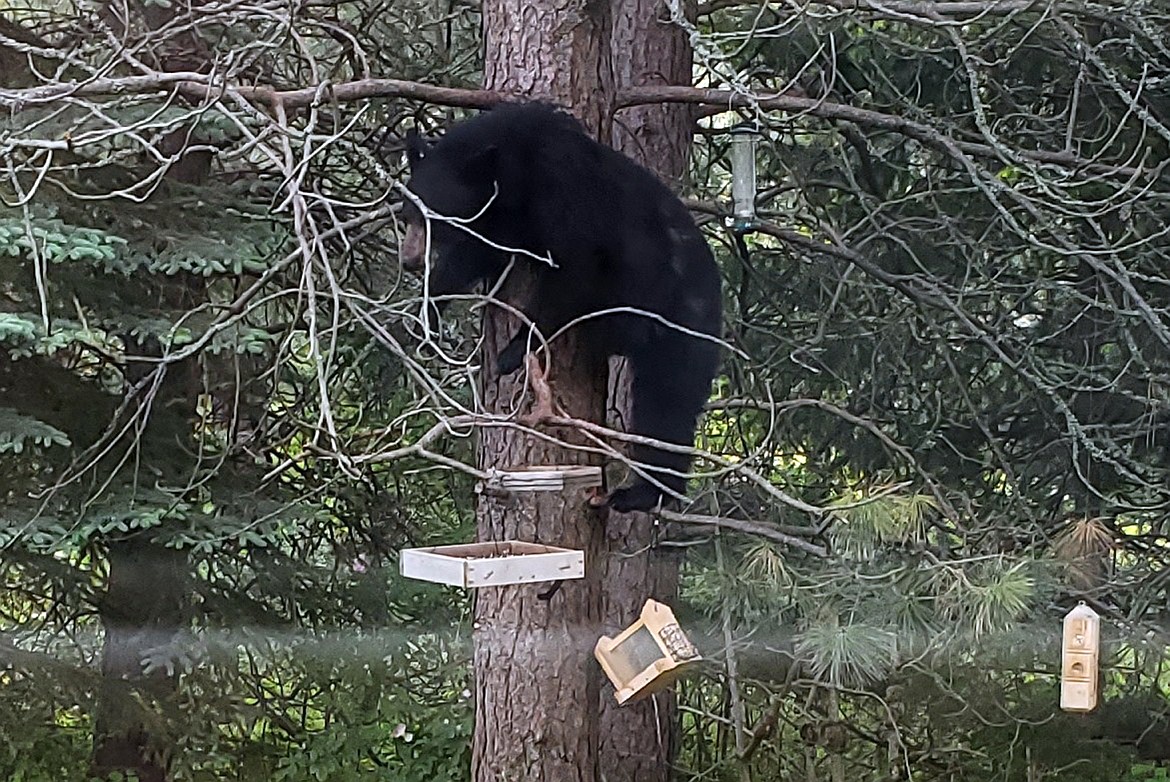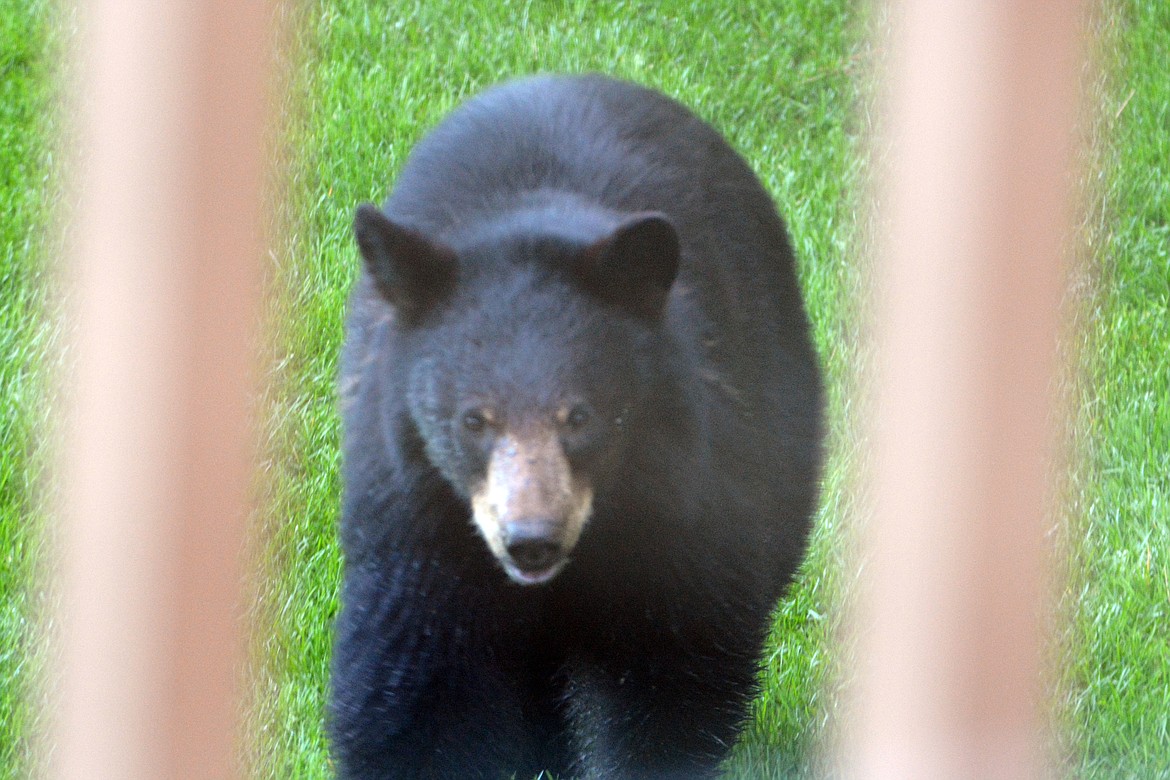Black bears are busy looking for food
“Black bears (Ursus americanus) are found throughout both the foothills and forests of Idaho. Between 20,000 and 30,000 black bears roam these wild lands. These bears share space with a human population that is expected to grow by more than 15 percent during the next 10 years. This means that human/bear encounters will continue and likely increase.”
— Idaho Department of Fish and Game
I have always wanted to take a picture of a black bear in Boundary County, but until recently I have never had the occasion to snap the picture.
Last week while sitting in the living room watching the evening news, suddenly I saw a black flash outside my picture window. I thought it was one of the wild tom turkeys on the back lawn, but when I took a second glance, I saw that it was a bear and rushed for the camera and clicked away. He was gone in a few seconds, but left a memory that will not be soon forgotten.
Seeing a black bear can be one of the most memorable experiences of a wilderness vacation and even more remarkable outside your home. Bears seem almost human at times, partly because of their high intelligence and partly because they can stand and sit like we do.
Their diet is also somewhat like ours, so fruit and nut shortages are problems for them just as they were for primitive people. In years of crop failure, black bears are almost as quick as chipmunks to overcome their fear of people and seek out food. And they are extremely adept at getting it. They have color vision, acute hearing, and a keen sense of smell. They learn quickly and can remember feeding locations for years.
Contrary to popular belief, more than 90 percent of most black bear diets consist of vegetation: berries, nuts and plants. A bear’s keen nose can smell foods up to five miles away! Although towns and residential areas have hazards such as dogs, cars, and people, they also have the benefits of food.
Black bears are common, and their native range includes most of the state. Black bears are typically shy, and any encounter with humans is usually brief, from a safe distance and usually ends with the bear fleeing. Black bear attacks on humans are rare, and there has never been a recorded human death from a black bear in Idaho.
When people see a black bear from a safe distance, they should consider it an exciting and interesting wildlife sighting. But they should not approach or crowd the bear, and it’s often a good idea to talk or yell to get the bear’s attention so it’s aware of your presence, especially if it’s moving in your direction and unaware of you.
If you have bear spray, don’t hesitate to use it if the bear approaches, shows no fear, or acts in any way aggressively. Remember bear encounters can happen quickly, so bear spray needs to be accessible at all times, not stashed in a backpack, saddle bag, or other place where it can’t be readily available.
Like campgrounds, bears typically visit houses or other property (sheds, garages, barns, etc.) if there is food available. Being omnivores, bears are attracted to a wide variety of things, such as garbage, pet food, livestock feed, bird feeders, gardens, fruit trees, etc.
Bears often ramp up their feeding in late summer and fall when they’re fattening up for winter hibernation. If a bear visits your property to feed, it’s likely to return, so remove the food as much as is practical, such as locking garbage cans in a garage, taking your pet food in at night, or picking fruit up off the ground and disposing of it away from the area.
Adult male black bear in Idaho range from under 200 pounds to as much as 500 pounds. Females typically weigh 80 to 300 pounds.
Bear encounters are most common in late summer and early fall when bears are actively feeding to gain weight for their winter hibernation, or during spring when they’ve recently emerged from their dens after hibernation.
Enjoy the outdoors and be bear-y aware of its wildlife.



